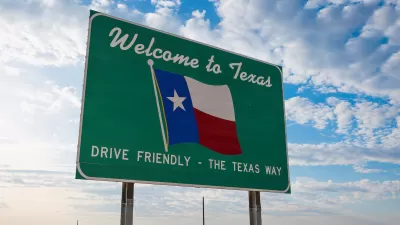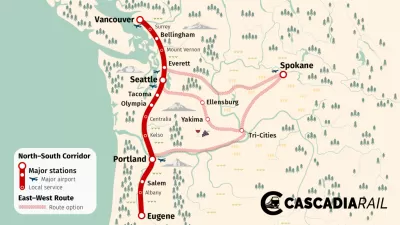A news study brings the receipts on state and regional transportation spending.

TransitCenter shares news of a recent study by the National Cooperative Highway Research Program that digs into how states spend their federal transportation money, finding that less than 4 percent of eligible federal highway funding is spent on transit projects—a decision known as “flexing.”
“Only eight states were ‘superflexers,’ transferring more than 4% of their federal highway funding to FTA: Nevada, Washington, Arizona, New York, Vermont, Oregon, Maryland, California, and New Jersey,” explains the article of the study’s findings. According to the study, the Congestion Mitigation and Air Quality (CMAQ) and the Surface Transportation Block Grant (STBG) programs were the programs most likely to be flexed for transit projects.
The report also helps understand why certain states and metropolitan planning organizations (MPOs) decide to flex their federal money to transit projects: it all comes down to “state and regional priorities.” According to the article’s explanation of the study’s conclusion, “Where state and local decisionmakers value transit, states use more of their highway dollars for public transportation.”
The article digs into more detail on the examples of Vermont and New Jersey, the former as an example of a mostly rural state, the latter as mostly urban. At the regional level, the article identifies leadership from MPOs in California and New York.
A May 2022 article by TransitCenter details how states and MPOs can flex highway dollars for transit projects.
The “Federal Funding Flexibility: Use of Federal Aid Highway Fund Transfers by State DOTs” report by the National Cooperative Highway Research Program was published in June 2022 by the National Academies of Sciences, Engineering, and Medicine.
FULL STORY: Want to Use Highway Dollars for Transit? These Places Already Do

Maui's Vacation Rental Debate Turns Ugly
Verbal attacks, misinformation campaigns and fistfights plague a high-stakes debate to convert thousands of vacation rentals into long-term housing.

Planetizen Federal Action Tracker
A weekly monitor of how Trump’s orders and actions are impacting planners and planning in America.

Chicago’s Ghost Rails
Just beneath the surface of the modern city lie the remnants of its expansive early 20th-century streetcar system.

Bend, Oregon Zoning Reforms Prioritize Small-Scale Housing
The city altered its zoning code to allow multi-family housing and eliminated parking mandates citywide.

Amtrak Cutting Jobs, Funding to High-Speed Rail
The agency plans to cut 10 percent of its workforce and has confirmed it will not fund new high-speed rail projects.

LA Denies Basic Services to Unhoused Residents
The city has repeatedly failed to respond to requests for trash pickup at encampment sites, and eliminated a program that provided mobile showers and toilets.
Urban Design for Planners 1: Software Tools
This six-course series explores essential urban design concepts using open source software and equips planners with the tools they need to participate fully in the urban design process.
Planning for Universal Design
Learn the tools for implementing Universal Design in planning regulations.
planning NEXT
Appalachian Highlands Housing Partners
Mpact (founded as Rail~Volution)
City of Camden Redevelopment Agency
City of Astoria
City of Portland
City of Laramie





























